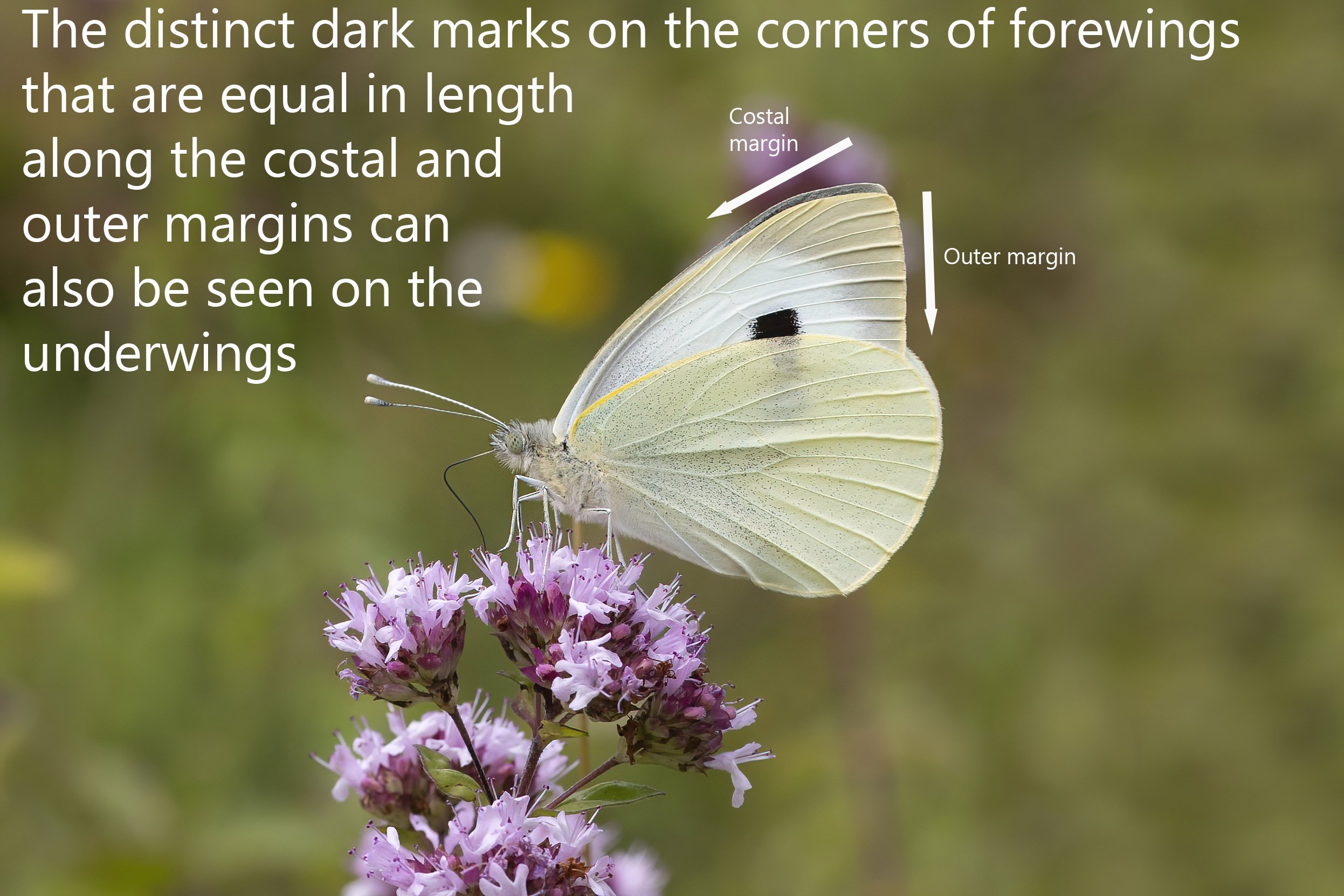Identifying Confusion Species - The Whites
The identification of the three commoner Whites, the Large White, Small White and Green-veined White can be quite problematic, especially when starting out in the study of butterflies. Even experienced lepidopterists will struggle to tell the Whites apart when in flight, and seeing them settled is the only way of being 100% sure of identification. As always with butterfly identification a pair of close-focusing binoculars can be helpful, as can photography, as they allow for closer inspection of the subtle differences of each species.
Starting the the Large White this is a large butterfly with a white base colour to the wings. Although size is a good indicator it shouldn’t be relied upon as it is possible to see some small Large Whites! The most diagnostic feature of the Large White is its large black mark on the apexes (top corners) of the upper forewings. If you look at the photo below you can see that this mark is equal in length along the costal and outer margins.
Large White
Fortunately, although this dark mark is on the upperwings it is still quite easy to see it showing through on the underwings when it is feeding or resting with its wings closed. It is even easier to see this mark if you can position yourself in place with the sun behind it although that isn’t generally necessary. You can see the dark mark showing through to the hindwing of this Large White in the photo below.
Large White
The Small White is very similar in appearance to the Large White as it has a white base colour to the wings. However, the Small White has a different dark mark on the apexes of the upper forewings. In the Small White, the dark mark is longer along the costal margin than it is along the outer margin as seen in this photo below.
Small White
Like the Large White, it is possible to see this dark mark through to the hindwing on the Small White as seen in the photo below. You can clearly see the mark is longer along the costal margin than the outer margin.
Small White
Small Whites can often be confused with Green-veined Whites but with a good view, the distinctive markings of the Green-veined White are easy to see. Identifying the Green-veined White is easiest when viewing the hindwing as the markings that give this butterfly it’s name are very apparent. You can see the vein markings in this photo below.
Green-veined White
The identification of the Green-veined White when you can only see the upperwings is slightly more difficult as although the vein markings can often be seen on the upperwings it isn’t always obvious. In this instance, we must turn again to look for the distinctive dark markings on the apexes of the upper forewings. In the Green-veined White this mark is broken as it runs along the outer margin and at the base of each vein forms a small triangular mark as seen in the photo below.






